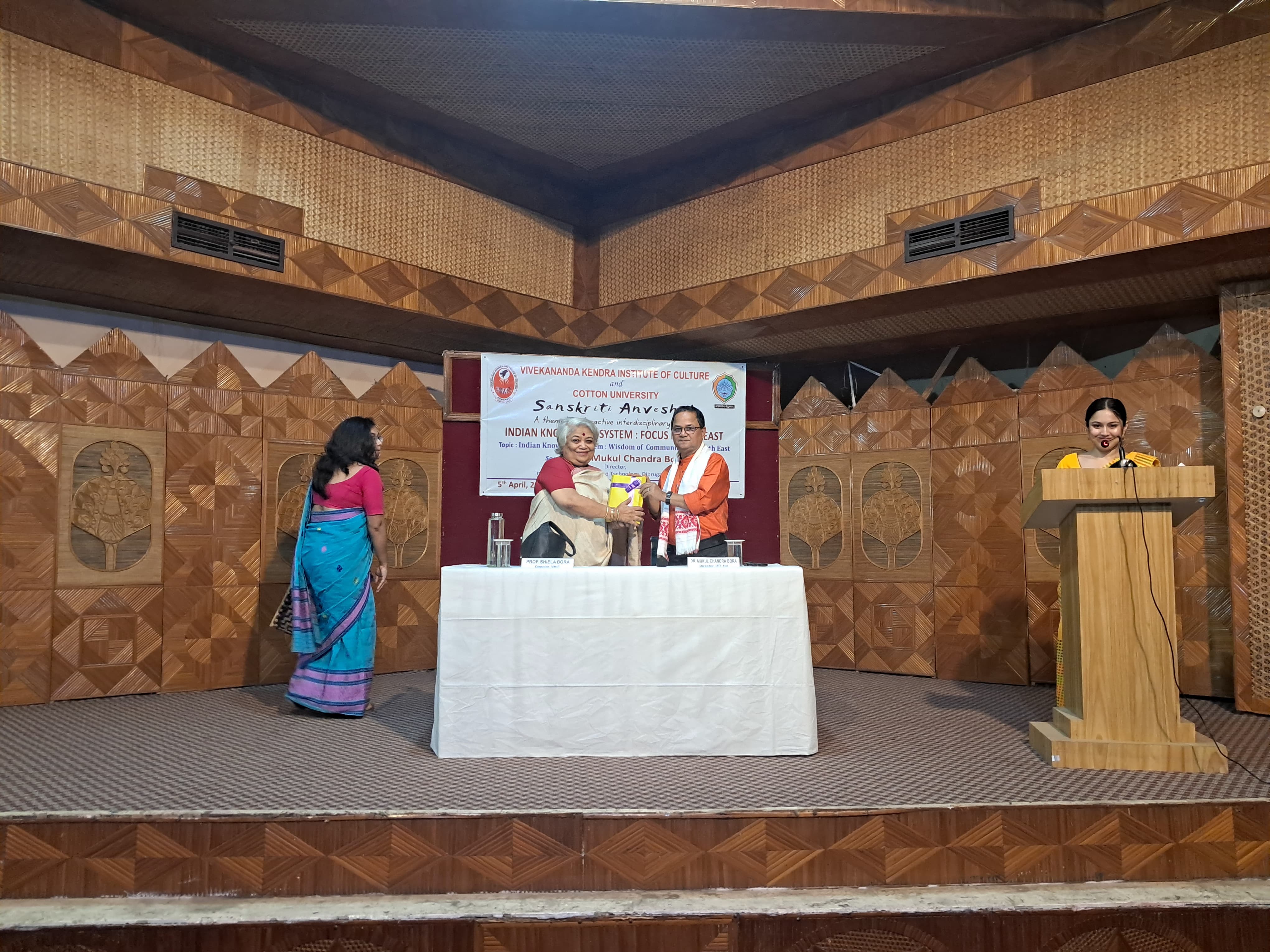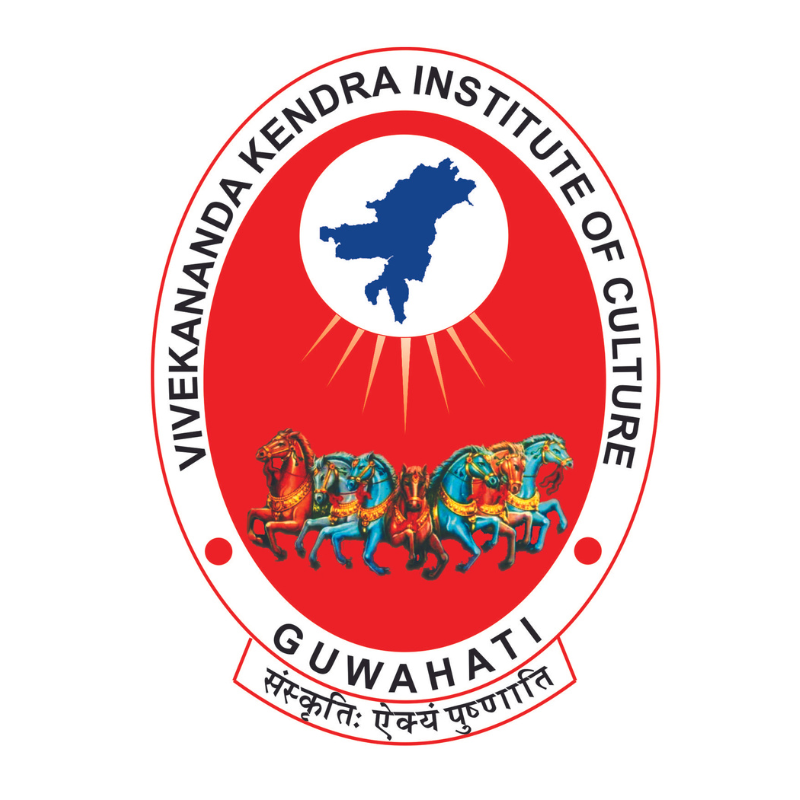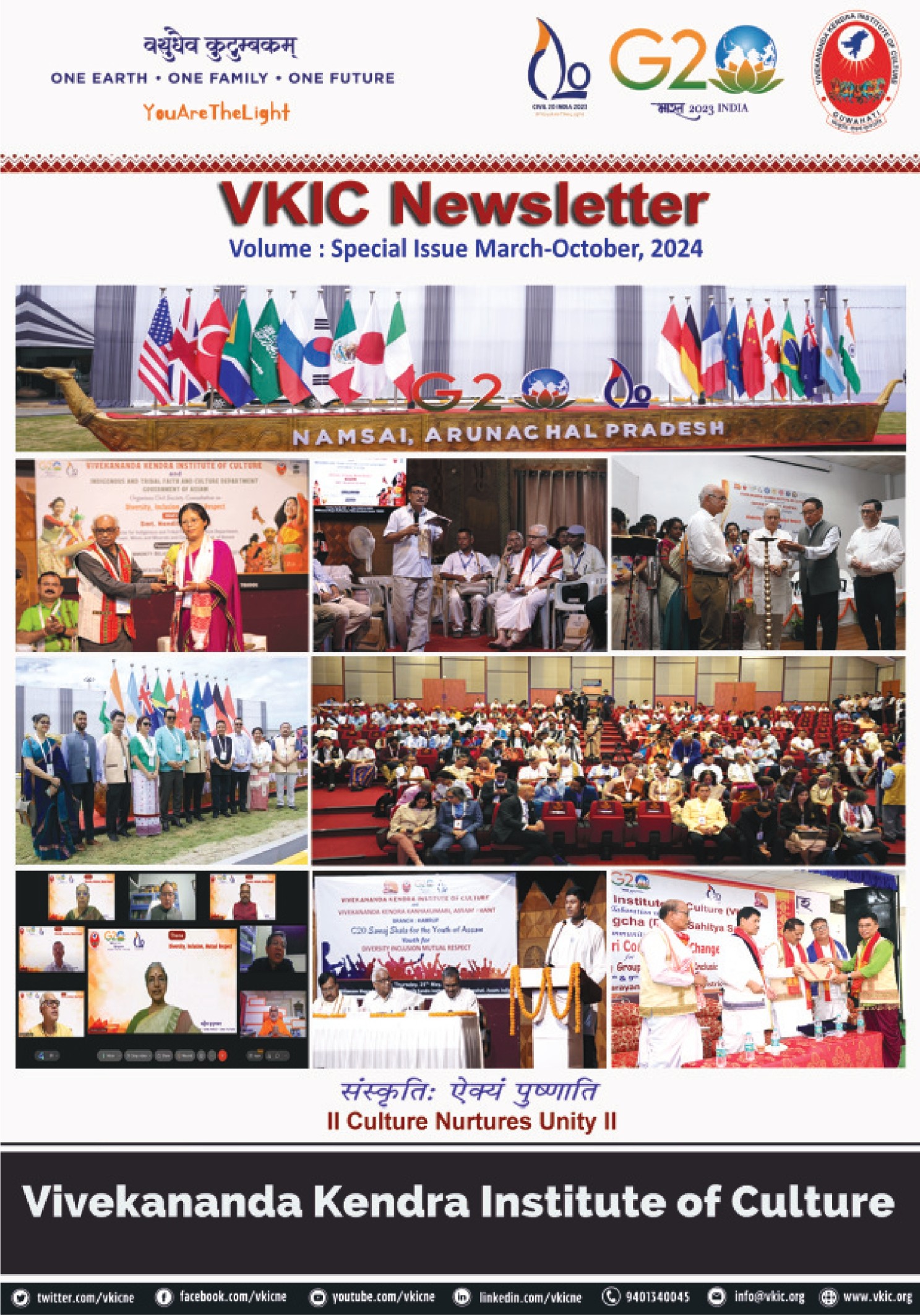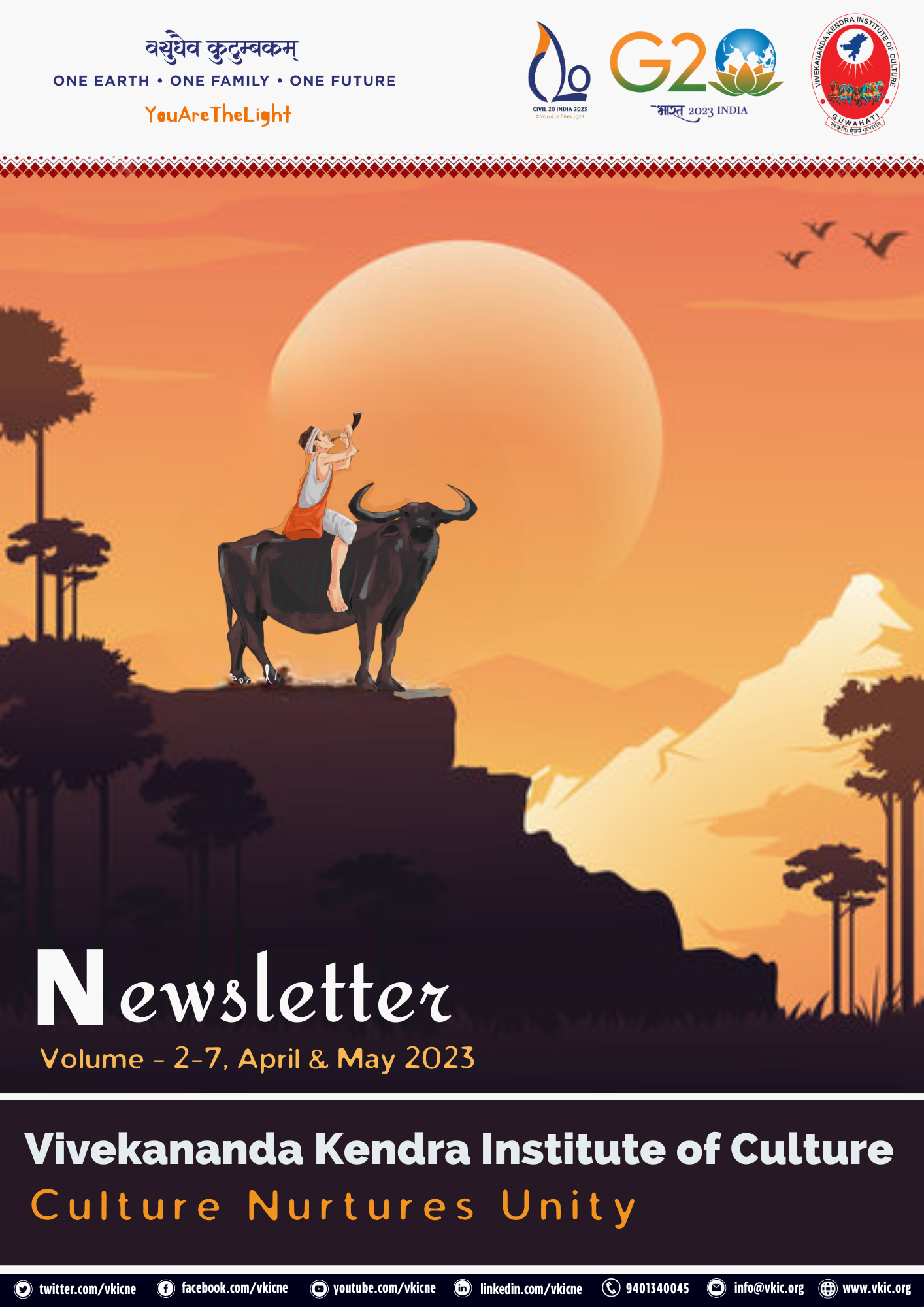
On 5th April 2025, Vivekananda Kendra Institute of Culture organized a thematic interaction under the banner Sanskriti Anveshak: A Thematic Interaction Interdisciplinary Forum. The event marked the initiation of a discussion series on the theme Indian Knowledge System: Focus on North East. Held at the Vivekananda Kendra Institute of Culture premises, the session witnessed the enthusiastic participation of 40 individuals, including members of Team Vivekananda Kendra Institute of Culture. Esteemed scholars Dr. Mukul Chandra Bora and Dr. Sheila Bora graced the occasion as speakers, sharing their insights and perspectives on the rich and diverse indigenous knowledge traditions of the North Eastern region of India. The session aimed to foster a deeper understanding and encourage further exploration of the Indian Knowledge System through an interdisciplinary lens.
Highlights of the Event:
- The event started with Mangalacharan by Natasha Saikia (JPA)
- Speaker Dr Sheila Bora initiated the discussion, stating it is the first series of Sanskriti Anveshak on the Indian Knowledge System. The study of traditional knowledge of the Northeast has proved that various aspects of social life are integrated and cannot be separated from each other, and the incorporation of our cultural thoughts and values in policy decisions can only find solutions for solving various problems we’re facing today.
- Northeast, which lies between two very big ancient civilisations (i.e., the Indian & Chinese), is a region contributing to the Indian knowledge system.
- The region is home to more than 200 ethnic tribal communities, and each of them is blessed with indigenous knowledge that has been passed down from one generation to another.
- The study of the cultures of Northeast India began in the first part of the 20th century. She also added that the study was done by Colombian administrators, anthropologists, and missionaries who came and studied the region from an anthropological point of view, and they stated or considered our culture as inferior in comparison to scientific development theories, and they also wrote that our culture is a very backward culture.
- They also make fun of us and every piece of knowledge that we have; the tribal communities were completely ignored, and the culture was replaced by modern and Western culture.
- The re-emergence of traditional culture in the form of an indigenous knowledge system justifies the need to give privacy for the revival of our cultural ideology.
- In contrast to the past, the Northeast is seen as knowledge societies.
- Tribal art & crafts are now seen as rich cultural heritage, and the medicinal knowledge is seen as very important.
- She also talks about the economic aspect of tribal societies. She stated that in a tribal economic system, their emphasis was never on profit maximisation.
- Whatever we do, our well-known medicinal plant is disappearing because the pharmaceutical companies come and uproot the entire plant.
- Vernacular architecture is built with local materials adapted to local climate conditions. Good connection with nature and using its resources.
Dr Mukul Chandra Bora Guest Speaker
- The Indian knowledge system has been there for ages. It was started with the Rig Veda and spread throughout Bharat-Varsha.
- The Indian knowledge system is a sum total of knowledges developed across the whole world but basically developed by the Hindu River.
- 64 women Rishis who were equally taking part from Shruti to Rig Veda and to all those ancient scriptures.
- Information which is received from reading books is not knowledge; information is just like that uncooked material brought from the market.
- 1835: Education policy – the British do not like Bengali because of constant questionings.
- There were people who learnt Sanskriti before coming to India.
- According to the Rig Veda, the cow is the first domesticated animal.
- Srimanta Sankardeva, Namghar, while offering “Sarai” (traditional dish with a stand), 7 fruits should be given. However, a similar concept was prevailing in the West: that 7-colour fruit should be taken.
- 80% of people in China, according to the WHO, take traditional medicine; however, 99.9% of paracetamol medicines are imported to India.
- He also stated that he got two books on medicine (the original Persian book and the second copy, which was translated by a US scientist).
- Science is not that which is not to be understood by common people; science is that which could be understood by common people.
- He also talked about the benefits of charcoal, as he mentioned that it is used as a facial mask, which is made up of bamboo charcoal, and the biggest exporter of bamboo is South Korea because they know the benefits of charcoal and know that indigenous knowledge has everything.
- We are not a developing country; we are an underdeveloped country because we don’t have the technology to manufacture needles.
- The highest proteins are contained in pulses.
- Agriculture was the first innovative process in India; that is why agriculture was not regarded as an industrial revolution.
- The essence of agriculture can also be found in ancient scriptures such as the Rig Veda.
- “Agriculture was first formally introduced in the place called Bharat-Varsha”; it is also known for Rig Vedic farming techniques. (Regenerative Farming Techniques)
- There was a concept known as cowboy economics (resources should be used in place; if they vanish, they go to another place) and 'Robin Hood economics (taking money from one person & giving it to another person).
- Indigenous knowledge is a part of experiential learning.
- Our education system is now just like a bonsai tree; with its bark, we cannot build a house, and it does not give us sufficient oxygen to breathe, etc.
- Now we have finished all the free elements of nature, soil has become poisonous, due to which earthworms are now no longer seen anywhere, especially in farming land.
- Water & air pollution is increasing day by day.
- In 1932 the Indian Medical Association Journal had published an article titled “Mineral Waters in India”. He also added that those water bodies which had mineral water properties had been completely polluted by industries.
- · He also mentioned water scarcity in cities of India, and the main cause of such disasters is none other than humans.
- The Chinese economy is built on indigenous knowledge.
- Kautilya's Arthashastra was not a book, but it is a library.
The event was ended with a Shanti path & vote of thanks by the secretary of VKIC


